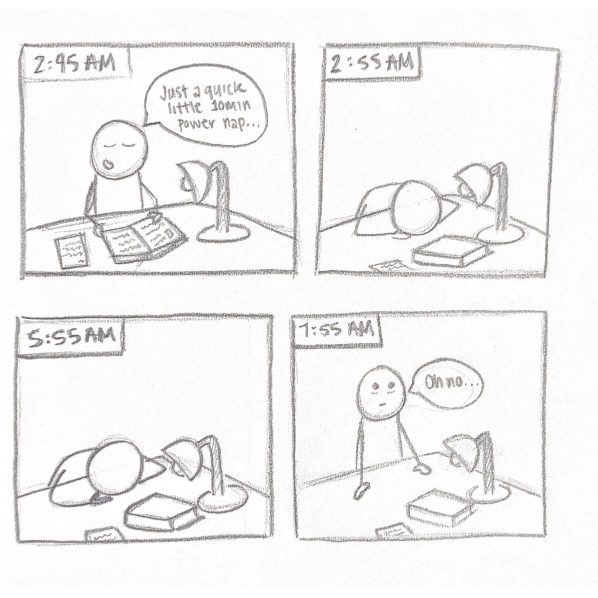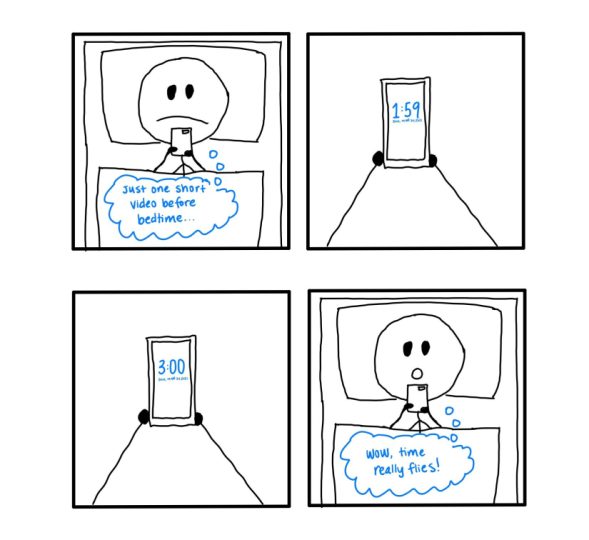Power Nap

Throughout high school I would often sleep very late, staying up to finish homework and projects—sometimes pulling all-nighters. However, there was times in which I’d get really sleepy but still had something to finish so I would take quick 10 to 15-minute power naps at my desk to recharge then continue working. Unfortunately, those power naps were not always succesfully carried out. I would sleep the remainder of the night and realize it until it was time to get up and ready for school—my assignment also incomplete.
Crafting this quadriptych comic was a very fun process. At first, the idea of adding one more panel in comparison to our triptych was relieving since I struggled a bit with deciding what parts of the narrative should be presented, but at the same time now it was “I gotta think of more content to present visually from the narrative”. For inspiration, I went through some of my favorite webtoon comic Safely Endangered since the author often uses these triptych and quadriptych formats. The Safely Endangered comics are very simple and really funny; since a lot of them are based on “common” happenings, such as applying eye drops or waking up still tired, I decided to think about my personal common happenings. I sketched out two different possible panel compositions. The first two panels in my first sketch included a longer version of the dialogue in my final sketch, followed by only 1 panel of sleeping before the waking up panel. The second sketch was basically the draft of my final version: one panel with short dialogue at the beginning, followed by two panels of sleeping before waking up. I went ahead and chose the second composition because having those middle two panels stretch out helps emphasize the passage of time—which plays along ironically with my “power naps”. Compared to the triptych sketch, this felt similar in having to figure out what was most appropriate way to efficiently present my narrative. However this quadriptych was different not only since I drew it rather than base it off one photo, but also it felt like I could present a longer and more detailed narrative even though it’s only a one panel difference.



